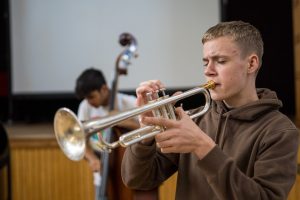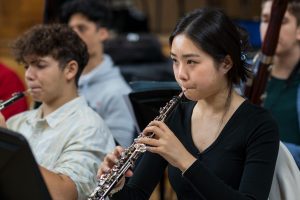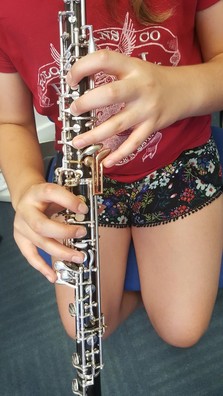On Wednesday oboe students participated in an Electromyography (EMG) session, run by Mel Ragge (School oboe teacher) and Sarah Upjohn (School physiotherapist). EMG is a way of looking at electrical activity in muscles by placing electrodes on the skin over the muscles. Pupils were asked to play a set of specific, standard exercises and looked at muscle activity in the abdominal muscles, the shoulder and the neck. EMG is useful for identifying whether there is unwanted muscle tension in the neck and shoulder girdle muscles, and whether abdominal muscles are providing support to the air stream required to play the oboe. The students were provided with a printout of their own EMG session and feedback about what their muscles are doing while they are playing.
Mel Ragge is both a musician and a notable name in Performing Arts Medicine alongside Sarah Upjohn. Both have chosen to focus on developing techniques in strain injury prevention. These sessions follow a longitudinal study of Purcell Oboists conducted by Mel. The study found that the use of EMG and biofeedback was able to reduce unnecessary neck and abdominal tension by around 50% in our young musicians.
|
Additionally, William Ring from Howarths visited the school on the same day, to get feedback from Purcell School oboists about a new oboe design for students with smaller hands; his ideas look really promising, and Purcellian oboists were rather excited to play a part in ‘road testing’ new ideas. They were also able to use EMG to see whether the more comfortable design helped to lessen stress on the thumb and wrist muscles. |












